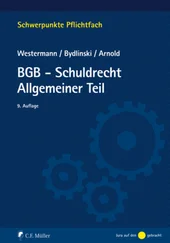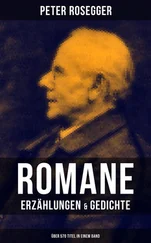Moments after he finished speaking, there was an explosion far above them. A single loud blast. The air shaft vibrated under their feet. Dust and rock rained down on them.
Atkins could tell it wasn’t an earthquake. Something was crashing down the air shaft, a wall of moving rock that was rolling in their direction.
“Everyone out of the shaft,” Murray screamed. “Get up the tunnel!”
The noise grew louder as the rock swept down the air shaft, blasting it wider as the walls gave way.
They ran up the main tunnel on Level 11, moving awkwardly under the weight of their air tanks, rope, and foam canisters. They’d gone about a hundred feet when Murray shouted for them to huddle in one of the “rooms” that had been dug into the rock face. There wasn’t time to go any farther. A cloud of coal dust and pulverized rock exploded down the length of the tunnel, pushed in by the collapse of the air shaft.
Coughing and spitting in the thick dust, Murray told them to put on their air masks until the tunnel cleared. When the dust finally settled a few minutes later, the entrance to the air shaft at the end of the tunnel had disappeared. It was completely sealed. There was no way to get through.
“That was a methane explosion,” Murray said, taking off his mask. The air had cleared sufficiently to breathe without assistance. “My guess is the fire ignited a pocket of gas.” He checked his meter. “Damn, we’ve still got a methane reading of 5.6.”
Still in the danger zone, the methane level had even climbed slightly. The only good news was the carbon monoxide levels had dropped.
They had to find another way up to Level 8, assuming it was still there. With all that methane in the air, they weren’t about to try to blast their way through the rock.
Murray said, “We’ve got three chances. The other air shaft, the elevator shaft, or the skip shaft. Let’s hope one of them is open.”
“What do we do if we run into a fire?” Wren asked.
“We try to get around it and keep moving,” Murray said. “You don’t want to have the fire get between you and an escape route.” Murray made a brief reconnaissance. He returned a few minutes later and said, “The skip shaft looks open. I can’t tell how far up it goes. At least one more level, maybe two.”
They had no choice. The entrance to the skip shaft was about eight hundred feet down the tunnel, which, to Atkins’ relief, still looked fairly intact.
Before they moved out, Murray wanted to do a short practice drill with their air tanks. He wasn’t happy with their first effort. Everyone had fumbled with the awkward mask and air canister.
Murray told them to put on their face masks, explaining they needed to familiarize themselves with the air supply system while there was still a little time. “When I give the word, turn off your headlamps,” he said. “If we run into smoke or dangerous levels of CO or methane up there, it could hit fast. You’ve got to be able to get that mask on in the dark.”
One by one, the helmet lamps went off as they squatted or knelt in the tunnel. Elizabeth was next to Atkins. The darkness was like nothing she’d ever experienced. Black, impenetrable. She couldn’t see her hand when she pressed it against her nose.
As she fumbled with her mask and straps, Elizabeth noticed a faint green light. Barely visible in the inky dark, it was glowing and luminescent. As her eyes slowly focused, she could make out the greenish light more clearly.
It formed an oval design. She realized it was the luminous dial of a watch.
Seeing it more clearly, her hand shot to her mouth, and she bit down on it to keep from crying out. She stifled a scream. She remembered the last time she’d seen it, not understanding what it was.
The night someone had entered the equipment room when the lights were out. She’d glimpsed a faint green light, a momentary flash of color.
It was the watch of the man who’d stolen her computer.
NEAR KALER, KENTUCKY
JANUARY 20
2:15 P.M.
“TURN YOUR LIGHTS BACK ON.”
At Murray’s order, Elizabeth and the others switched on their helmet lamps. Heart pounding, she looked to see who was sitting to her left. That’s where she’d seen the luminous dial, or where she thought she’d seen it. Someone must have checked the time, momentarily revealing the glowing watch face.
In the darkness, it was hard to pinpoint exactly where an object was located.
Atkins and Weston were to her left. Murray, Wren, and Booker sat across from them. They were all bunched together.
Elizabeth focused on everyone’s hands, looking for the wristwatch with the oval dial.
No luck. The long sleeves of their jumpsuits covered their wrists. With their headlamps on again, Elizabeth couldn’t tell who was wearing the watch.
But he was here. Close to her.
She wanted to scream. It took every ounce of her frayed self-control to keep the look of anger and fear off her face. He was sitting within a few feet of her, a few inches.
“We better move out,” Murray said. They were on Level 11. He explained that they were going to ascend the skip shaft about two hundred feet to Level 9. Moving back into the coal tunnel on that level, they’d try to see if the air shaft or man shaft was still open so they could climb up to Level 8, where the elevator cage waited for them.
They had to keep going at all costs.
Murray warned them it was likely they’d encounter smoke—possibly fire.
“Loop the air masks around your neck so you can get them on fast in an emergency,” he advised. They headed down the tunnel to the skip shaft. Murray checked his gas meter. The carbon monoxide levels were rising. So was the methane, which had climbed to 6.3 percent.
“This keeps up, we’re going to have another explosion,” he said grimly. “It’s just a matter of time.”
They started up the skip shaft. Elizabeth hung back so she could whisper a few words to Atkins. “He’s here,” she said softly. “The man who stole my laptop.”
The words startled him. They were totally unexpected. Atkins said, “Who is it?” He knew it couldn’t be Booker or Murray. There were only two possibilities, Weston or Wren.
“I don’t know,” she said. “I saw his wristwatch when we turned off our lamps. I recognized the luminous dial from that night. It was the only thing I got a look at. I remember seeing a blur of something green. I didn’t realize it was a watch until a few seconds ago in the dark.”
“What did it look like?” Atkins asked, trying to keep his voice down.
Elizabeth described the watch.
“Get ready to take another look,” he said. “I’m going to try something.” He shouted to Murray up at the head of the line.
“Hey, Doc. Can we turn off the headlamps again? Just for a few seconds. I’d like to have one more try with the face mask. I don’t have it down yet.”
“Make it quick,” Murray said.
Atkins noted where Weston and Wren were in the shaft. They all switched off the lamps on their hard hats. Instantly, the blackness swallowed them up, obliterated their presence.
Atkins waited, straining to see. Then he glimpsed the watch. It was just ahead of him, a green, oval-shaped dial. He wanted to reach for it, grab it, but held back.
The man with the watch had his arms extended, bracing himself on the narrow walls of the shaft.
“I’ve got it now, thanks,” Atkins said, calling out to Murray. Everyone turned their headlamps back on.
Ever since Elizabeth had told him what had happened, Atkins was sure it had to be either Weston or Marshal.
The man with the watch was the soft-spoken geologist, Mark Wren.
ATKINS and Elizabeth both got a clearer look at the wristwatch as Wren kept his hands pressed against the sides of the skip shaft. Atkins was struck by the man’s daunting coolness. During the descent into the mine, he’d spoken several times to Elizabeth, had helped her pick up her gear, offered his hand to her in some of the more difficult places. He’d given no indication anything was wrong, not the slightest hint.
Читать дальше












